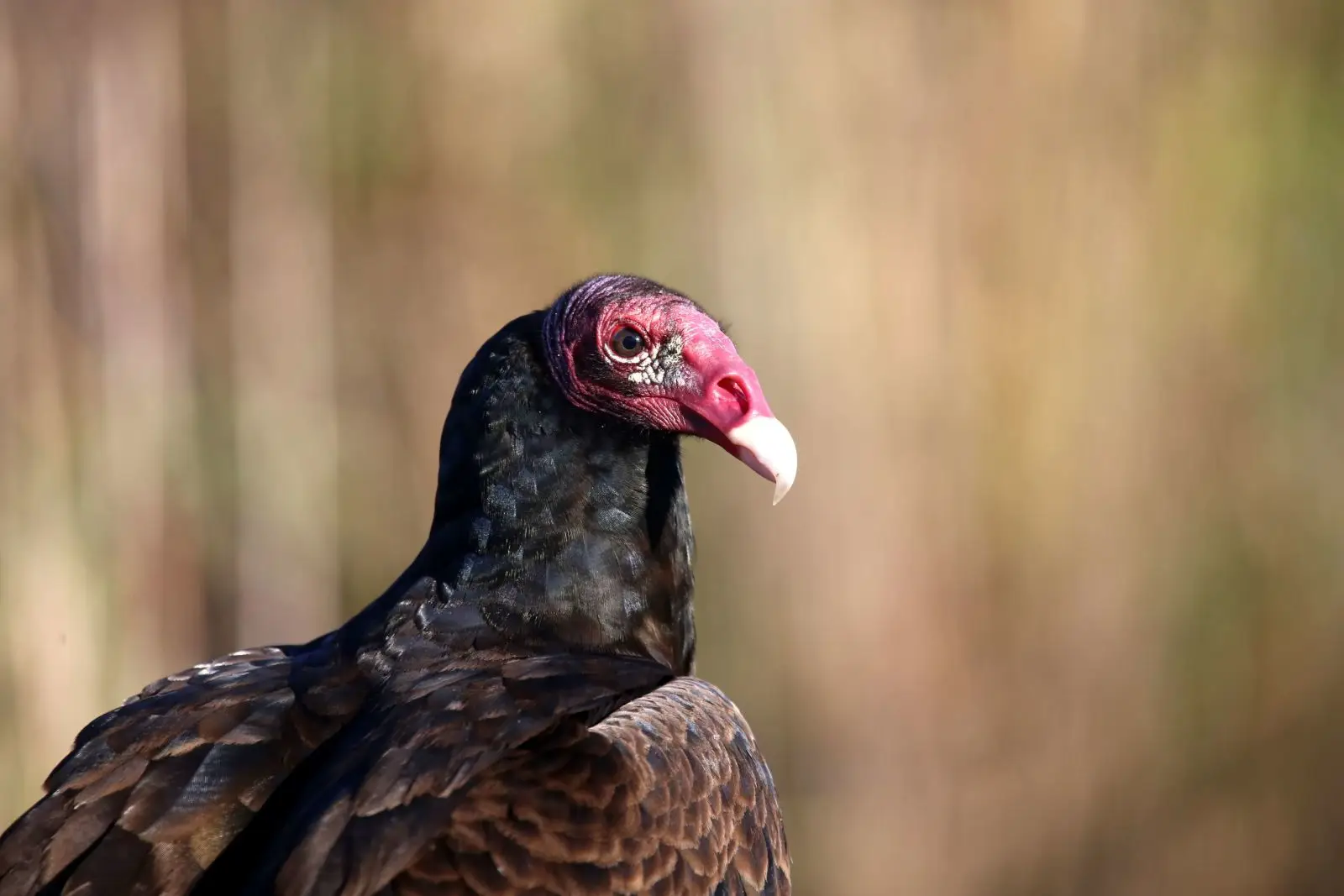by Shi En Kim, High Country News
In humankind’s ongoing war against rats, rodents are far from the only casualties.
Over the last few years, a common class of chemicals known as anticoagulant rodenticides has come under fire for its heavy toll on wildlife. Despite statewide restrictions on these pesticides in California, a recent study found that as many as 13% of turkey vultures in the Los Angeles area tested positive for the chemicals. Given the birds’ unique ecological perch as nature’s carnivorous cleanup crew, the results reveal just how thoroughly anticoagulant rodenticides pervade the ecosystem. They are a reminder of how human actions can have vast environmental consequences, often compounded by climate change — and, in this case, for fundamentally limited returns.
Anticoagulant rodenticides work by causing their victims to bleed to death, often internally. Afflicted animals show signs of anemia and often bleed from their nostrils, mouth, and anus before they die. Animal cruelty aside, these substances are problematic because they can persist in carcasses and the environment for up to a year. This means that a poisoned rat can in turn poison its predator, and that predator’s predator as well, long after the first fatal nibble. The upshot is vast collateral damage: raptors, foxes, coyotes, bobcats, and mountain lions — all of which help keep rodent populations in check — have been sickened or killed by these toxins. Occasionally, pets fall victim, too.


“I consider them to be like our modern-day DDT, due to the fact that they have infiltrated the entire food web,” said Lisa Owens Viani, the director of Raptors are the Solution, a nonprofit that champions wild predators rather than rodenticides as a pest-control solution.
Thanks to the advocacy efforts of groups like Owens Viani’s, in 2020, California signed into law a ban on the most harmful anticoagulant rodenticides by the general public and pest control companies. In 2023 and again in 2024, the state passed additional legislation that added older versions of these rodenticides to that ban.
“I consider them to be like our modern-day DDT, due to the fact that they have infiltrated the entire food web.”
Immediately after the first ban was passed, raptor deaths by poison dropped nearly 15%, according to data from the California Department of Fish and Wildlife, though the numbers have fluctuated in subsequent years. But the new study, in which tested turkey vultures for the chemicals after the initial bill was enacted, showed that anticoagulant rodenticides still pervade the environment.
According to study author Miguel D. Saggese, an avian and wildlife researcher at Western University of Health Sciences in Pomona, California, the results “provide further evidence that there is still a problem out there for non-target species.”
SCAVENGERS LIKE TURKEY VULTURES, with their diverse carrion diet, are good sentinels of rodenticides’ footprint across an entire ecosystem. Still, the results might be an underestimate. The new study examined blood samples from live-captured vultures, so the results provide only a snapshot of the birds’ most recent encounters with the chemicals. Liver necropsies, which are more telling of chronic exposure, tend to register higher contamination rates — one 2022 study found that 93% of turkey vultures in Northern California and southern Oregon had anticoagulant rodenticides in their bodies — though necropsy results can skew toward animals that have already perished from the poisons.
Turkey vultures are not a threatened species, but their exposure sounds an alarm for their more vulnerable neighbors. Spotted owls, bald eagles, and the iconic California condor are already at risk of extinction, and anticoagulant rodenticides are likely a contributing factor. In the past, monitoring efforts have detected the toxins among these birds of prey. The prevalence among turkey vultures indicates that the chemicals need to be eliminated from the environment to ensure the health of wildlife in the West, whether or not the animals are endangered.


California is the only state with legislation restricting anticoagulant rodenticides. But even the Golden State’s bills have gaping concessions: The agriculture industry and food producers are exempt from the bans, as are public health agencies. And some people still set out illegal rat bait boxes anyway, regardless of what the law says.
Still, there’s another compelling reason to renounce anticoagulant rodenticides: They’re not all that effective at reining in rats. Experts say that a more durable solution is to not give rodents a reason to come by in the first place — by sealing off food sources and fortifying trash bins. Not only do the relatively slow-acting poisons falter against the prolific reproduction of rodents, they also kill off the rats’ natural predators, which are humanity’s most valuable allies against rodent infestations. Ultimately, the chemicals we employ to control rat populations end up helping rat populations slide out of control. “None of it makes any sense,” Owens Viani said. “I just feel like it’s kind of a scam that’s been perpetrated to the public.”
“I just feel like it’s kind of a scam that’s been perpetrated to the public.”
And climate change is making things worse for pesticides-strained raptors. “Climate change is the very MOTHERSHIP of ecological stressors,” wrote Allen Fish, a raptor biologist and former director of the Golden Gate Raptor Observatory, in an email. Already-weakened species may lack the wherewithal to deal with dwindling food sources and shrinking habitats. Meanwhile, warming temperatures allow rats to remain active during mild winters, eating and mating instead of laying low underground, and society’s typical response — doling out even more rodenticides — only increases secondary poisoning events.
Anticoagulant rodenticides may well prove the last straw for some species’ survival. “It’s an ongoing environmental catastrophe that’s happening right before our eyes,” Owens Viani said.
This article first appeared on High Country News and is republished here under a Creative Commons license.



